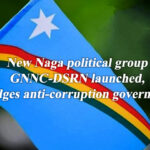Nagaland’s recent performance at the Northeast Games 2024 deserves applause. Finishing as first runners-up, behind the perennial powerhouse Manipur, is a significant achievement. This accomplishment not only reflects the dedication and hard work of our athletes but also serves as a catalyst to invigorate the spirit of sportsmanship across the state. It injects a much-needed dose of encouragement into the state’s sporting community – athletes, administrators, and policymakers alike.
In retrospect, Nagaland’s journey in the Northeast Games has been one of steady progress. From a modest performance in 2018 to a commendable improvement in 2022, and now clinching a significant number of medals in 2024, the trajectory signifies a promising trend. From 42 medals in 2018, including 6 Gold, 9 Silver, and 27 Bronze, to 78 medals in 2022, comprising 18 Gold, 17 Silver, and 43 Bronze, and finally, an impressive haul of 134 medals in 2024, with 48 Gold, 42 Silver, and 44 Bronze, the statistics highlight Nagaland’s evolving prowess in the sporting arena.
This achievement is particularly noteworthy considering Manipur’s historic dominance. Closing the gap on a powerhouse like Manipur in just six years is a sign of progress. While Nagaland’s ascent to the second position is indeed commendable, it also underscores the gap that exists between Nagaland and the leading state. This gap presents both a challenge and an opportunity for Nagaland to strive for excellence and to bridge the divide. True celebration should be accompanied by introspection. While Nagaland has progressed, the dominance of Manipur reminds us of the long road ahead. Manipur’s consistent performance, with a hattrick of championships, highlights the need for Nagaland to translate this success into long-term development. The inclusion of new disciplines like belt wrestling, where Nagaland excelled, demonstrates a strategic approach. However, the absence of weightlifting, where Nagaland currently lacks athletes, exposes potential gaps in talent identification and training infrastructure.
As we celebrate the collective achievements of the state, it is also imperative to delve deeper into the dynamics of inclusion within our sporting ecosystem. Amidst the celebrations, a crucial question arises – how widespread is this progress? The absence of a good number of athletes from many districts raises pertinent questions about accessibility and representation. The lack of participation from certain areas not only hampers inclusivity but also deprives aspiring talents of the opportunity to showcase their potential on a larger platform. While the state as a whole thrives, it is vital to ensure all districts contribute to and benefit from this sporting surge.
That being said, it is crucial to consider the performance of athletes from Mokokchung. We must inquire about the representation of Mokokchung athletes in the Nagaland contingent. Were there one, two, or none? The world of sports is a burgeoning industry, brimming with career opportunities. We cannot afford to leave any district behind. It is imperative to identify and address any roadblocks hindering Mokokchung’s participation. Are there inadequate facilities? Lack of coaching? Or a cultural disconnect hindering aspiring athletes? Regrettably, it appears that Mokokchung is either unprepared or unable to capitalize on these opportunities.



